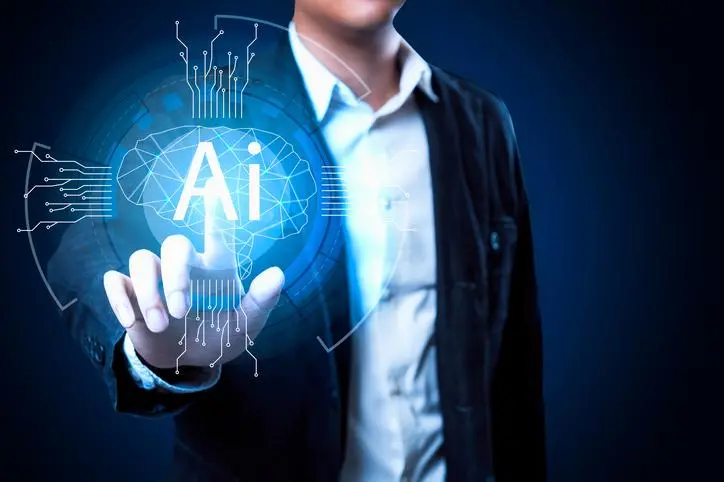PHOTO
Cairo:– Capgemini unveiled today its ‘TechnoVision Top 5 Tech Trends to Watch in 2024’, focused on the technologies that are due to reach an inflection point next year. In 2023, generative AI took center stage in the global public and business conversation, and raised expectations that technology could catalyze progress in business and society. While it will continue to be a highly discussed topic next year, other key technologies are expected to also reach a stage of maturity or breakthrough in 2024, to contribute to solving today’s most pressing challenges for businesses, society and the environment.
“For anyone following the news these past few months, it is impossible to deny the transformative impact of technology. Generative AI is an obvious example, but it is not the only one,’’ explains Pascal Brier, Chief Innovation Officer at Capgemini and Member of the Group Executive Committee. “Every day, Capgemini’s teams are scanning the technology landscape to harness the power of innovation for our clients and anticipate key technology breakthroughs on the horizon. Besides generative AI, areas to watch in 2024 include evolutions in semiconductors, post-quantum cryptography, battery technologies, and new space exploration, all of which will be instrumental to help us address the challenges of our economies, communities and ecosystems.”
Technologies to watch in 2024:
- Generative AI: Small will be the new big
Generative AI has made a crashing entrance in the global technology and business conversation in late 2022 and 2023, with expectations of significant business impact. In 2024, will it live up to the massive amount of hype it has generated? The short answer is yes. While current ‘Large Language Models’, will continue to thrive, there is also an increasing need for smaller, more cost-efficient models. These models will get smaller and smaller to run on low-footprint installations with limited processing capabilities, including on the edge or on smaller enterprise architectures. In 2024, new AI platforms will also increasingly battle hallucinations by combining generative AI models with high quality information from Knowledge Graphs. In support of all this, platforms will arise, providing tools for companies to leverage generative AI without the need for deep internal technical expertise. This will lead, in the long run, to the creation of interconnected networks of models designed and fine-tuned for specific tasks, and to develop true multi-agent generative ecosystems.
Why it matters: These developments in generative AI are indicating an evolution towards a more accessible, versatile and cost-effective technology. These innovations will enable organizations to scale their generative AI use cases faster while also deriving more long-term value from the technology.
- Quantum technologies: When cyber meets quantum
A cyber arms race is under way, where advancements in computing power must be met by bolstered digital defense mechanisms. For example, AI and Machine Learning (ML) are increasingly being used in threat detection, while the zero-trust security model may become a global standard. But a new threat is rapidly emerging, driven by the development of quantum computing, which may render obsolete the current encryption standards like RSA and ECC. The development of quantum-resistant algorithms is therefore becoming a pressing necessity for maintaining data privacy and security in the future. In the US, the standard for “post-quantum cryptography” (PQC) i.e. encryption algorithms believed to be resistant to quantum attacks, will be issued in 2024 by the National Institute of Standards and Technology. As the Quantum Computing Cybersecurity Preparedness Act requires public and private organizations supplying the US government to be ready to migrate to PQC within a year after the NIST standards are released, this topic is bound to make its way into board room conversations in 2024.
Why it matters: This emerging shift promises to upend the very basis of cybersecurity standards globally. All business leaders and technology experts will be affected by this approaching milestone, while more and more organizations begin their quantum transition.
- Semiconductors: Moore’s Law isn’t dead, but it is changing
As the most traded good in the world (ahead of crude oil and motor vehicles), semiconductors are a crucial enabler of digital transformation. Moore’s Law states that the computing power of a microchip doubles every two years while the cost halves – but is this theory reaching its physical and economic limits? The semiconductor industry is on the verge of a transformative era, with multiple factors converging to redefine its landscape in 2024. Chips are reaching 2nm, transistors are approaching the size of a few atoms, and the ever-growing investments in R&D and cutting-edge fabrication facilities are becoming challenging for even the largest chipmakers. 2024 should see an evolution of Moore’s law, with new paradigms: despite approaching the absolute physical limit of chip miniaturization, chiplets should see breakthroughs in 3D chip stacking, innovations in material science and new forms of lithography to continue increasing computing power.
Why it matters: An accelerated digital transformation is expected across industries, enabled by more powerful connected objects, from smartphones to electric vehicles, to data centers and telecoms. These technological breakthroughs will be reflected in shifts in the ecosystem of semiconductors itself, with new gigafactories, regulations, business models and foundry services emerging in 2024.
- Batteries: The power of new chemistry
Improving the performance and reducing the costs of batteries is a major focus for both businesses and governments, as the industrial stakes are high for each nation. The aim is to support electric mobility and accelerate long-duration energy storage, which is critical to speed-up the energy transition to renewables and the acceleration of smart grids. While LFP (lithium ferro-phosphate) and NMC (nickel manganese cobalt) are becoming standard for electric vehicle applications, several technologies with the chemistry of batteries are being explored, such as cobalt-free (sodium-ion) or solid-state batteries, with a likely acceleration in 2024. The latter represents a major shift in battery technology, primarily for electric vehicles, as they have higher energy densities (i.e. storage capacity), for a price which will become lower than traditional batteries. They also reduce dependency on materials such as particular lithium, nickel, cobalt, rare-earth minerals and graphite, while promising longer lifespans and more robust safety.
Why it matters: In a business world driven by the energy transition and the fight against climate change, these emerging developments may offer a pathway towards greater choices for the battery industry and a more sustainable use of materials.
- Space tech: Addressing the earth’s challenges from outer space
In 2024, humanity will be preparing to return to the moon. This renewed interest in space technologies aims to drive scientific discoveries and help solve the earth’s most critical challenges, including the monitoring of climate risks and disasters, better access to telecommunications, as well as defense and sovereignty. The New Space Age is driven not just by government agencies, but also by private actors, from startups to corporations, and is supported by various technologies such as 5G, advanced satellite systems, big data, quantum computing, etc. In 2024, this should accelerate innovation and support very promising technology projects in the field of sustainable spacecraft propulsion (either electric or nuclear) and new Low Earth Orbit constellations for seamless communications and quantum cryptography.
Why it matters: The last Space Race revolutionized the world by accelerating groundbreaking innovations like satellite technology, GPS, integrated circuits, solar energy and composite materials. This return to the stars promises similar revolutions in the fields of computing, telecommunications, and earth observation.
Beyond 2024 - technologies shaping the next 5 years:
- Low-carbon hydrogen: Towards a credible alternative to fossil fuels
Hydrogen has long been touted as a clean fuel alternative because it produces only water when burned. However, traditional hydrogen production is energy-intensive and often relies on fossil fuels. The trend toward low-carbon hydrogen seeks to change this by using renewable or nuclear energy to power the electrolysis of water, splitting it into hydrogen and oxygen with zero carbon emissions. Advances in electrolyzer technology, including the development of proton exchange membrane (PEM) and solid oxide electrolyzers, are improving efficiency and reducing costs, however low-carbon hydrogen is still not competitive at this point, in addition to other reliability and scaling challenges. Countries and corporations around the world are investing heavily in low-carbon hydrogen as part of their strategies to achieve carbon neutrality, with the aim to bring its cost down in the near future.
- Carbon capture: Accelerating the decarbonation of carbon-heavy processes
While reducing carbon emissions remains the top priority, as defined by the Paris Agreement, several hard-to-abate industries will also need to invest in carbon capture technologies (especially at the point of source, such as a cement or steel factory) to reach their decarbonation goals. New methods of capturing CO2 are becoming more efficient and less energy intensive, supported by significant public investment especially in the US and the EU. Innovations include the development of advanced solvent technologies that require less energy to capture, use and store CO2, as well as solid sorbents offering lower cost and higher CO2 selectivity. Additionally, the filtering of CO2 from other gases using membrane technology is being refined to improve its efficiency and scalability. Nevertheless, carbon capture is still facing specific challenges such as cost, storage or conversion in industrial processes. There is also significant research into the removal of CO2 directly from the atmosphere via direct air capture (DAC), even though that application remains expensive compared to its alternative carbon capture solutions.
- Synthetic biology: Harnessing the power of nature
The Covid-19 pandemic brought to the forefront the importance of synthetic biology to protect public health, highlighting the immense potential of innovations like synthetic mRNA to develop vaccines at unprecedented speeds. In November 2023, a major milestone was reached when the UK medicines regulator approved a therapy leveraging the CRISPR-Cas9 gene editing tool as a treatment against sickle-cell diseases, the first of its kind in the history of medicine. But synthetic biology goes much, much further. It is an interdisciplinary field combining biology, engineering, computer science, and biotechnology, allowing for revolutionary applications that could dramatically impact medicine, agriculture, and environmental sustainability. Standing at the confluence of rapid technological advancements and critical global needs, this technology is poised to be a hot topic in the next few years. Innovations on the horizon include programmable cells and organisms capable of manufacturing new drugs, green chemicals, and sustainable materials, as well as breakthroughs in gene editing that offer the potential to cure genetic disorders.
TechnoVision 2024
TechnoVision is a global program from Capgemini articulating a comprehensive view of the world of Technology to help leaders make technology-driven business transformation decisions. It is guiding decision-makers through the myriad of emerging technology trends, to focus on those which will make their organization more effective. The 2024 edition of Capgemini’s TechnoVision report will be published in January 2024.
www.capgemini.com/technovision
-Ends-
About Capgemini
Capgemini is a global leader in partnering with companies to transform and manage their business by harnessing the power of technology. The Group is guided everyday by its purpose of unleashing human energy through technology for an inclusive and sustainable future. It is a responsible and diverse organization of nearly 350,000 team members in more than 50 countries. With its strong 55-year heritage and deep industry expertise, Capgemini is trusted by its clients to address the entire breadth of their business needs, from strategy and design to operations, fueled by the fast evolving and innovative world of cloud, data, AI, connectivity, software, digital engineering and platforms. The Group reported in 2022 global revenues of €22 billion.
Get The Future You Want | www.capgemini.com



















